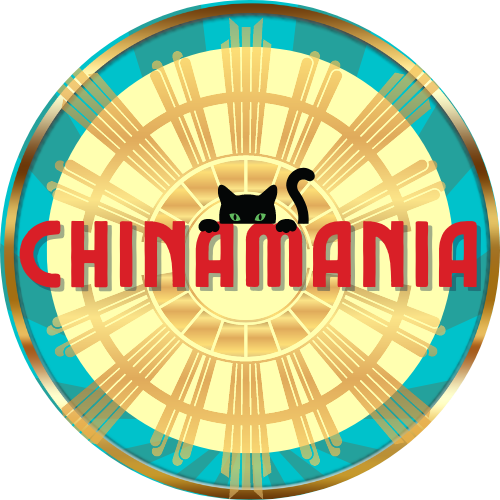Beyond the glaze; Uncovering the Stories behind Kathie Winkle's Iconic Patterns
On the Coincidence of the Backstamp
Kathie Winkle may not be a household name, but among pottery collectors, she’s a legend. Her bold and colourful designs have adorned millions of dinner plates, and have been featured in at least three major TV shows. And although her name is now synonymous with Broadhurst pottery, few know that she started her illustrious career in 1947 aged 15, with an apprenticeship at the pottery manufacturer Shorter & Sons. For three years she honed her skills there as a decorator before joining Broadhurst in 1950, but they were to have another much bigger impact on her success, albeit indirect and unintentional.
One of Shorter’s many claims to fame was their association with Clarice Cliff whom aged 17, had started work there as a decorator in 1916. Colley Shorter, much impressed by Clarice’s work, later provided her with her own studio next to his office, as well as financing a modern design course at the Royal College of Art and a trip to Paris to observe the arts scene there. But even great talent needs skilled marketing. Luckily Colley was a consummate salesman and it was he who conceived the idea of personalising her designs with her signature, thus launching one of the 20th century’s design legends… and along with it, the trend of putting a designer's name on their work.
On the Selling Power of Designer Names
Colley's expert marketing tactic meant that customers (usually women, who were the influencers if not the actual purchasers) could connect with a person rather than an inanimate object. This was a smart , as it helped to build a personal connection between consumers and the designers whose work they were buying. Many pottery manufacturers adopted this practice in the decades that followed. And from 1964 Broadhurst included Kathie Winkle's signature on the backstamp as an added selling point.
It helped to create a sense of continuity which increased the potential for repeat purchasing - if customers could see that Kathie was responsible for their favorite designs, they were more likely to keep buying from Broadhurst as a result. Noticeably, the designers featured tended to be women; no doubt because tableware was considered to be within a woman's domestic sphere.
On Broadhurst in the Early Years
On the explosion of MCM styles in the 1950s
From the Seychelles to San Tropez; the 1970s Costa Del Fever
Put on your shades and cast your mind back to the 70s. On one hand Britain faced a period of economic struggle due to a weak government and the oil crisis - for some that meant austerity. Yet others chose to escape the entire situation with newly affordable package deals from travel agents which mushroomed on every corner. British holiday fever was in full swing and Broadhurst were quick to jump on the bandwagon.
Using pattern names that conjured up images of exotic destinations, they gave customers a taste of the sunshine they were craving. Seychelles, Monaco, San Tropez, San Marino and more - all inspired by the top holiday hotspots of Spain and France. But it wasn't just the names that made these designs a hit. The teal, orange and yellow abstract-cum-floral patterns created by designer Kathie Winkle brought a slice of sunshine onto drab kitchen formica countertops. Folk just couldn't get enough - with over one million pieces manufactured in 1974 alone. With the move from hand painting to machine application and finishing, the mass production promised by the Bauhaus dreams, finally became a reality.
Fun Facts
- She was first asked to design for James Broadhurst & Sons in the 1950s and her launch pattern was Pedro in 1958.
- This was very similar to Matador which was produced in the same decade but was not by her.
- The most popular patterns were Rushstone, (1965), Barbeque (1968), Eclipse (1971), Safari and Mikado (1963)
- Of these the number one was, Rushstone, which sold in excess of 55 million pieces.
- In total 122 designs were manufactured under the Kathie Winkle brand.
- Not all of them were designed by Kathie Winkle.
Chinapedia
Real Old Willow by Booths
Booths acquired Colclough (a big fish in the china world) in 1944, but were then acquired themselves in 1955 by a bigger fish who already owned Ridgways. Ain't karma a...
Real Old Willow by Booths
Booths acquired Colclough (a big fish in the china world) in 1944, but were then acquired themselves in 1955 by a bigger fish who already owned Ridgways. Ain't karma a...
The Importance of Jingdezhen
In China the name Jingdezhen is virtually synonymous with ceramics, particularly porcelain. In England the name Jingdezhen rhymes with porcelain. That's gotta mean something.
The Importance of Jingdezhen
In China the name Jingdezhen is virtually synonymous with ceramics, particularly porcelain. In England the name Jingdezhen rhymes with porcelain. That's gotta mean something.
Blue Flower Pattern
Great porcelain patterns are copied, or rather reinvented by various manufacturers, especially when one of them has been successful. That's one of the reasons there are several very valuable blue flower...
Blue Flower Pattern
Great porcelain patterns are copied, or rather reinvented by various manufacturers, especially when one of them has been successful. That's one of the reasons there are several very valuable blue flower...
